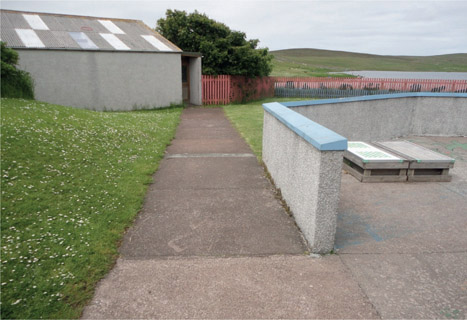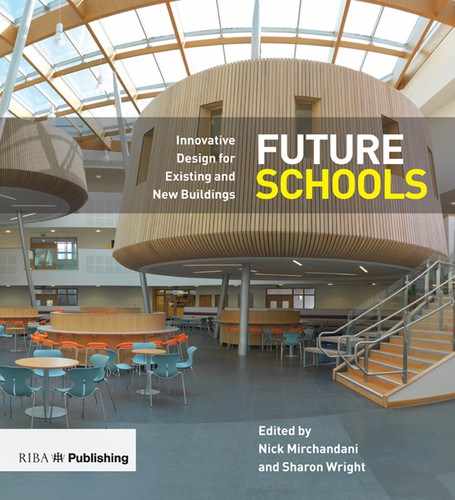
Removing walls improves circulation around the playground. Tunnel and sandpit provides opportunity for different activities and pupil interactions.

Existing slope and redundant access path. Walls divide up the playground restricting movement.

Tunnel combined with loose materials results in imaginative opportunities for play and learning.

Redundant access path and existing block walls.
Grounds for Learning was asked by the Scottish Government to enhance the play and learning opportunities at Happyhansel Primary School, while embracing the local culture, environment and site constraints, all on a tight budget. The main principles in developing the design were a wish to:
- Encourage physical activity and provide features that stimulate a range of physical activities.
- Develop physical skills, encourage a range of basic movement skills including climbing, jumping and balancing.
- Boost creative thinking – a concept that linked to a local legend of the Trows (Shetland Trolls) combined with non-prescriptive resources to encourage problem solving and creativity.
- Improve behaviour and social skills, provide a space where the pupils would work and play together in a collaborative way.
- Provide for teacher-free learning to capture the imagination of pupils and allow them to lead and develop play opportunities.
- Make use of local resources, materials and skills in order to maximise the budget and reduce transportation costs to this remote location.
- Allow use of the grounds throughout the year, no matter how challenging the weather.
- Support the authority and school community in providing risk benefit assessments, maintenance plans and additional training to develop positive solutions to concerns.
Key lessons include:
- Make the most of the existing site. Simply removing a number of walls and small sections of fence improved the circulation around the playground and provided access to areas that were previously unused or out of bounds. This included a small area of woodland, which is particularly scarce in the Shetland environment.
- Don’t be constrained by the school boundary. Get to know neighbours and areas nearby to establish what opportunities these might provide.
- Every setting is unique with its own specific requirements (environmental and cultural). The success of this type of project relies on the confidence and ability of the school community to embrace the development.
- Keep the external space fresh and exciting using flexible ‘loose materials’ and appropriate outdoor storage. In this case a robust timber store with internal shelving was provided as part of the capital works.
- School grounds should never be considered complete! They are an environment that should continually evolve and adapt along with the pupils.
..................Content has been hidden....................
You can't read the all page of ebook, please click here login for view all page.

